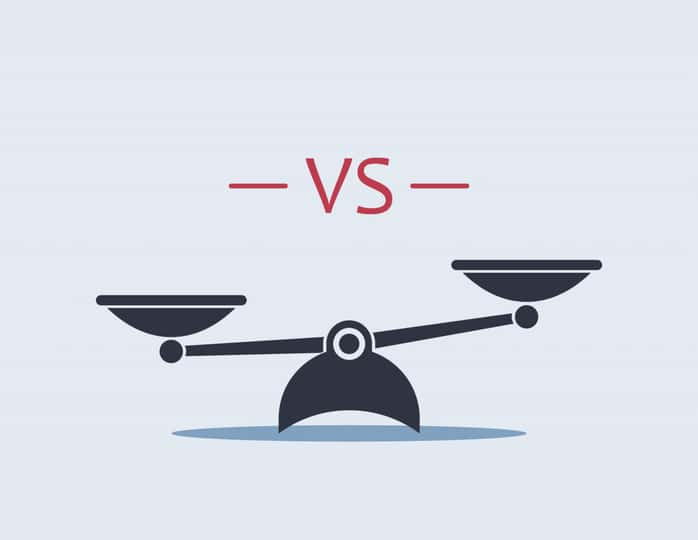In this piece, I evaluated two China stocks, Alibaba Group Holding Limited (BABA - Get Rating) and China Automotive Systems, Inc. (CAAS - Get Rating), to determine which has been drawing investors’ attention lately. Based on the fundamental comparison of these stocks, I believe CAAS is the better investment for the reasons explained throughout this article.
After three years of strict COVID-19 restrictions, China announced loosening up on rules and opening its borders in December 2022. The National Bureau of Statistics of China reported that the GDP grew by 4.5% year-over-year in the first quarter of 2023, indicating that the world’s second-largest economy is firmly on the path to recovery after the lifting of its ‘dynamic zero-COVID’ strategy.
The nation’s GDP was higher than the 4% forecast in a Reuters poll and marked the highest growth since the first quarter of last year. Also, the economy expanded by 2.2% quarter-on-quarter.
However, after better-than-expected growth in the first quarter, China’s economic recovery is losing steam. A slew of economic data in May raised hopes of decisive policy intervention. Retail sales, a key gauge of consumption, rose 12.7% from a year earlier, slowing from the 18.4% gain in April and below expectations for 13.6% growth forecast by a Reuters poll.
Furthermore, China’s industrial production grew by 3.5% in May from a year ago, slightly missing expectations. Also, the country’s youth unemployment rate hit a fresh record high of 20.8% last month. The jobless rate for people of all age groups in cities was 5.2%.
As China’s economy loses momentum lately, Goldman Sachs joined Wall Street banks in slashing the country’s growth outlook. Goldman cut its forecasts for full-year GDP from 6% to 5.4%. Goldman Sachs’ economists said several macroeconomic issues are facing the nation.
“With the reopening boost quickly fading, medium-term challenges such as demographics, the multi-year property downturn, local government implicit debt problems, and geopolitical tensions may start to become more important in China’s growth outlook, economists added.
CAAS is a clear winner in price performance, with 19.9% returns over the past nine months compared to BABA’s 2.5% gain. Moreover, CAAS has gained 19.9% over the past year, while BABA plunged 14%.
Here are the reasons why we think CAAS could perform better in the near term:
Recent Financial Results
BABA’s revenue increased 2% year-over-year to $30.32 billion in the fourth quarter that ended March 31, 2023. Its income from operations declined 9.7% from the year-ago value to $2.22 billion. Its adjusted EBITDA was $4.68 billion, up 37.4% year-over-year. In addition, the company’s non-GAAP net income and non-GAAP EPS were $3.99 billion and $0.20, an increase of 38% and 35% year-over-year, respectively.
CAAS’ net sales increased 4.3% year-over-year to $142.20 million for the first quarter that ended March 31, 2023. Its gross profit grew 46.9% year-over-year to $21.60 million. Its income from operations was $7.70 million, compared to a loss from operations of $1.50 million in the same quarter of 2022.
Furthermore, the Net income attributable to the parent company’s common shareholders was $6.80 million or $0.23 per share, compared to a net loss of $1,289 thousand or a loss per share of nil in the first quarter of 2022.
Past And Expected Financial Performance
Over the past three years, BABA’s revenue and EBITDA grew at 19.5% and 1.6% CAGRs, respectively. The company’s net income and EPS declined at CAGRs of 21.3% and 21.1% over the same time frame, respectively. Also, its total assets increased at a CAGR of 10.1%.
Analysts expect BABA’s revenue and EPS for the first quarter (ending June 2023) to increase 8.6% and 21% year-over-year to $31.03 billion and $1.96, respectively. For the fiscal year (ending March 2024), the company’s revenue and EPS are expected to increase 9.2% and 9.9% from the previous year to $132.31 billion and $8.36, respectively.
In addition, BABA’s EPS is expected to grow 1.1% per annum over the next five years.
CAAS’ revenue and EBITDA grew at 10.6% and 18.8% CAGRs over the past three years, respectively. Over the same period, the company’s net income and EPS increased at 49.1% and 50.5% CAGRs, respectively, while its total assets grew at a CAGR of 4.9%.
For the second quarter ending June 2023, CAAS’ revenue and EPS are expected to increase 10.7% and decrease 64.5% year-over-year to $140.72 million and $0.11, respectively. Furthermore, analysts expect the company’s revenue for the fiscal year (ending December 2023) to grow 7% year-over-year to $566.71 billion. Over the next five years, CAAS’ EPS is expected to grow 10% per annum.
Profitability
BABA’s trailing-12-month revenue is 236.3 times what CAAS generates. Moreover, BABA is more profitable, with a trailing-12-month gross profit margin and EBITDA margin of 36.72% and 16.62% compared to CAAS’ 16.64% and 7.68%, respectively. BABA’s trailing-12-month levered FCF margin of 12.85% is higher than CAAS’ 2.77%.
Furthermore, BABA’s trailing-12-month ROA and ROTC of 5.95% and 5.01% compared with CAAS’ 0.55% and 2.80%, respectively. Also, BABA’s trailing-12-month net income margin of 8.38% is higher than CAAS’ 5.24%.
Valuation
In terms of trailing-12-month non-GAAP P/E, CAAS is currently trading at 5.45x, 51.3% lower than BABA, which is trading at 11.19x. CAAS’ trailing-12-month Price/Sales multiple of 0.29 is lower than BABA’s 1.82. Likewise, CAAS’ trailing-12-month EV/EBITDA of 9.34x compared to BABA’s 2.79x.
In addition, CAAS’ trailing-12-month EV/Sales multiple of 1.55 is 86.5% lower than BABA’s 1.55. Also, CAAS’ trailing-12-month Price/Cash Flow of 7.75x compared to BABA’s 2.97x.
Thus, CAAS is relatively more affordable.
POWR Ratings
BABA has an overall rating of C, which equates to a Neutral in our proprietary POWR Ratings system. Conversely, CAAS has an overall rating of A, translating to a Strong Buy. The POWR Ratings are calculated considering 118 different factors, with each factor weighted to an optimal degree.
Our proprietary rating system also evaluates each stock based on eight distinct categories. BABA has a C grade for Growth, consistent with its mixed financials. On the contrary, CAAS has a grade of A for Growth, in sync with its solid financial performance.
In addition, BABA has a C grade for Value, justified by its mixed valuation. BABA has a trailing-12-month non-GAAP P/E of 11.19x, 11% lower than the industry average of 12.58x. However, the stock’s trailing-12-month EV/Sales multiple of 1.55 is 34.6% higher than the industry average of 1.15.
On the other hand, CAAS has an A grade for Value, consistent with its lower-than-industry valuation. CAAS’ trailing-12-month non-GAAP P/E and EV/Sales of 5.45x and 0.21x compared to the industry averages of 12.58x and 1.15x, respectively.
Of the 43 stocks in the B-rated China industry, BABA is ranked #20, while CAAS is ranked #3.
Beyond what we’ve stated above, we have also rated both stocks for Stability, Momentum, Sentiment, and Quality. Click here to view BABA Ratings. Get all CAAS ratings here.
The Winner
After lifting its strict COVID-19 restrictions that were in place for almost three years, China’s economic growth has been under the spotlight as it reopens. The nation’s economic recovery has been stalling recently after robust consumer and business activity in the first quarter. So, when considering the top China stock picks, looking for resilience and growth potential within this volatile economic landscape is vitally important.
CAAS’ robust financials, discounted valuation, and bright growth prospects make it a better buy than its competitor BABA, and this Chinese stock has been drawing significant investors’ attention lately.
Our research shows that the odds of success increase when one invests in stocks with an Overall Rating of Strong Buy or Buy. View all the top-rated stocks in the China industry here.
What To Do Next?
Discover 10 widely held stocks that our proprietary model shows have tremendous downside potential. Please make sure none of these “death trap” stocks are lurking in your portfolio:
BABA shares fell $0.22 (-0.25%) in premarket trading Thursday. Year-to-date, BABA has declined -1.50%, versus a 14.59% rise in the benchmark S&P 500 index during the same period.
About the Author: Mangeet Kaur Bouns

Mangeet’s keen interest in the stock market led her to become an investment researcher and financial journalist. Using her fundamental approach to analyzing stocks, Mangeet’s looks to help retail investors understand the underlying factors before making investment decisions. More...
More Resources for the Stocks in this Article
| Ticker | POWR Rating | Industry Rank | Rank in Industry |
| BABA | Get Rating | Get Rating | Get Rating |
| CAAS | Get Rating | Get Rating | Get Rating |






